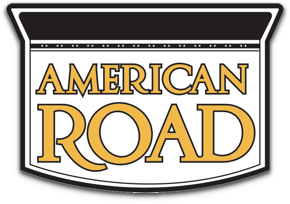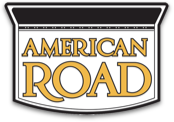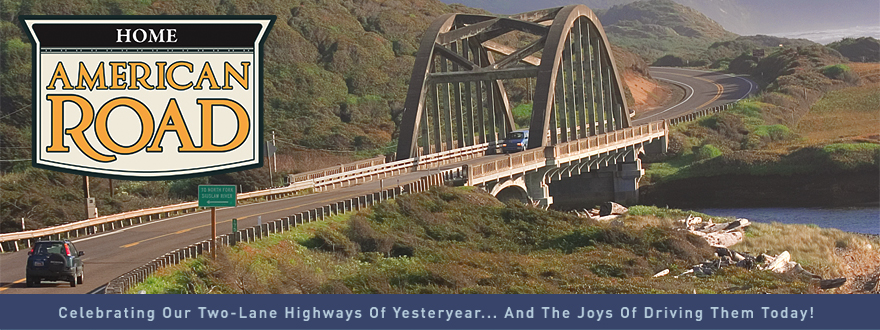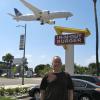-
Posts
328 -
Joined
-
Last visited
-
Days Won
4
Content Type
Profiles
Forums
Gallery
Blogs
Calendar
Posts posted by mga707
-
-
I've personally driven 54 from Santa Rosa NM, where it veers SW off of I-40, all the way to it's El Paso terminus. It was an interesting drive, first through the now near-ghost town of Vaughn NM, which was once a decently thriving town with plenty of now-closed or faded mid-century era road edifices (restaurants, motels, gas stations) due to its location at the junction of three US routes (54/60/285). If one is a fan of this type of architecture, Vaqughn is like an open-air gallery, on par with anything along 66. The highway continues southward through the Billy the Kid country of Lincoln County and Carizozo, then down along the eastern side of the White Sands Missile Range (where Trinity Site is located--open twice each year to visitors and well worth the trip) to Tularosa and Alamogordo (by far the largest town along this stretch of the highway. From Alamogordo it continues on, almost in an arrow-straight line, down through the vast emptiness of the Fort Bliss back country proving grounds into Texas and El Paso.
A close friend has driven the stretch of 54 from Wichita to Tucumcari NM, where it joins I-40 and runs concurrently for a short stretch between Tucumcari and Santa Rosa, just to take a slightly different route on one of her semi-regular Chicago-Tucson road journeys. She reports that the road runs mostly straight and empty through the high plains of western Kansas, the Oklahome panhandle, and across the extreme northwest corner of Texas into northeast New Mexico. She did make a slight detour in Kansas to visit Dodge City, which she describes as "like Tombstone, only bigger and less authentic-looking".
So, there's my firsthand and secondhand report on the western portion of US 54 between Wichita and El Paso!
-
Just to expound a little, though true that the exit is being reworked, we want folks to kknow that the vast majority of this loop is blissfully untouched from its last major re-alignment work back in the Thirties and remains a wonderful time capsule - not to be missed. Rolling hills through a mesquite studded terrain, pebbly outcroppings and roadcuts; the historic 1921 Cienega Creek arch bridge and it's high and long neighboring Union Pacific RR trestle make this additional 15 minute side trip a worthy excursion for those that are aware of it!
Agree totally with the above. The best thing for me about the 'Cienega loop' of old 80 is that it is only about a 15-minute drive from my house on the southeast side of Tucson to the west end of the loop at the !-10/SR 83 exit. One of my favorite 'Sunday drives'!
Kind of funny that we will be losing the mid-1950s Marsh Station Road interchange (at the east end of the loop) but keeping the 1930s highway alignment that is the loop itself.
-
I've just acquired a new "adventure touring vehicle" although driving it right now involves a little more adventure than I'd like.
It's a 1963 Valiant in desperate need of a new top. I bought it specifically to drive the Lincoln Highway during its centennial year in a car exactly half as old as the road.
Beautiful! Don't see a 'V' emblem on the fender, so I assume it's got the 'bulletproof' (and long-running) "slant six"?
-
Wow! I can't compete with all of your rides for looks, but this big old black beauty was the best road trip ride I ever drove. It floated down the highway, had comfy suede-like fabric seats that you could stretch out on, and it even went off-road a couple times without flinching (I think it sits on a truck chassis). It's an Oldsmobile Delta 88. Does anyone know what year? Here it is parked at a campground beside the Grand Teton Mountains.

Andrew Van Winkle
Not a truck chassis, just the same rear-drive GM B-body platform as the Chevy Caprise/Impala, Pontiac Bonneville, and Buick LeSabre. From your side view shot it could be anywhere from a 1980 through an '85 model. Would have to see the front and/or rear views to narrow it down, as those areas were what got 'tweaked' every model year during that time frame.
-
Hi Neil!
Welcome! Either way, your trip along the "Linc" should be a good one, especially as a cycle trip. I love the wide-open unpopulated spaces of the Great Basin. Hope you have a great time!
-
I took a look on Google Maps at that section. Very evocative of the period. No shoulders, blind hills.....just a ribbon across the desert....GREAT! Thanks for the heads up!
Dave
Keep the Show on the Road!
What is even 'neater' about this particular old 80 section--which I had not discovered until I read Jeff Jenson's excellent "Broadway of America" guidebook last year--is that there are several locations along this loop where the original 1921 roadbed is still visible, along with old bridge abutments, etc. The alignment was slightly changed in several places circa 1933, which is probably when the first blacktop was laid down. In one small area there are four distinct road eras: The original 1921 dirt Bankhead Highway/Broadway of America/Old Spanish Trail, the 1933 improvement/slight realignment, the 1955-56 major realignment over Davidson Canyon, eliminating this section as part of US 80, and the early 1960's overlay of Interstate 10 over the 1955/56 alignment, with two new lanes of blacktop, and a twin bridge over the canyon, paralleling the 1955/56 roadway. Now the interchange rebuild/realignment will add a fifth era to part of this section. Lots of highway history here.
PS. I was at the Museum of Flight today. As i recall, you were planning to visit there. You will enjoy it.Actually, I've been to the excellent Museum of Flight at Boeing Field, Seattle, although it has been a good 20 years. Next summer I'll hit all of the Portland-area aviation history establishments, which will all be new to me. Will get back to BFI for another jaunt through the Museum of Flight (love the original Boeing "Red Barn"!) someday!
-
I understand that roads are here to serve the modern need, but it always makes me sad to see an example of old road engineering get ripped out. jim
I know what you mean. One could always tell that this particular exit had some years on it just by the way it was designed. 1955 state-of-the-art doesn't take long to become 2010 totally obsolete!
-
The Arizona Department of Transportation (ADOT) is currently in the midst of a major I-10 exit realignment/reconstruction at Exit 289 east of Tucson. This exit, signed as Marsh Station Road, is significant to 'roadies' as it is the east end of of an old US 80 loop off of the current alignment. This loop extends eight miles west to Exit 281, the SR83/Sonoita exit, and is well-known as a prime example of 1930's-era US highway construction. The loop was bypassed circa 1955-56 by a newer, straighter US 80 section over Davidson Canyon that was incorporated into Interstate 10 by the early 1960s.
The reconstruction of the Marsh Station Road exit is extensive, with the entire exit being moved eastward about a mile and a half. Once the new exit is completed, in a couple of years, the old exit, including a part of the original 1920s Old Spanish Trail/US 80 alignment, will be removed and the Interstate alignment widened where the old exit underpass once stood. As it is now, this is the only section of I-10 outside of the Tucson and Phoenix metro areas where the speed limit is reduced to 65mph due to the narrowness of the median. Once the new exit is opened and the Interstate realigned, it will be 75 all the way.
So, if one wants to drive the full extent of the old 80 loop, do it soon!
-
It is a 1938 Studebaker State Commander.
Ah, a Studie!
When looking through my reference book, I missed it mainly 'cause I wasn't looking much before 1940. Should've known that Studie was a style leader in moving the headlights into the fenders just as they were the first to bring out an all-new postwar car that made the 'big three's' 1946-47 offerings look positively ancient!
Thanks!
-
Could be a late 30's Pontiac, going by what looks like a Pony emblem under the headlight. That's a WAG, by the way.
Hudsonly,
Alex Burr
Memphis, TN
Thanks for the guess, but my old auto source ("Encyclopedia of American Cars 1930-1980") shows all Pontiac model years as having 'normal' round headlights, both before and after they migrated from the sides of the grille into the fenders. The '39 Nashes had a somewhat similar odd headlight shape, but not quite the same. Also a different grille pattern. Any other guesses?
-
Dave:
The "old time AC" pictured is really an auto version of that ubiquitous Arizona rooftop fixture, the swamp-box cooler. The "swamp-box" is an ingeniously simple device in which a rotating fan motor sucks warm air over water-laden pads (aspen chips make the best cooler pad material), cooling the air before it is drawn in through an opening in one side of the cooler and blown throughout the house via the ductwork.
A cooler is actually more efficient than an air conditioner (and a heck of a lot cheaper to run) during the first part of a southern Arizona summer, from early May through the end of June, when 100+ degree days with single-digit humidity (I've experienced 2%!) are the norm.
They definitely lose their edge over AC once the 'monsoon season' with higher humidity (20-40%) kicks in around the first of July through mid-September. Now that it is once again drier and not as hot, a cooler again works wonderfully from mid-September through October, as summer winds down.
The ideal set-up, of course, is to have both installed at one's home.
The 'car cooler' is even simpler, as the blower motor is not needed since the forward motion of the auto forces the air through the water-infused pad in the device. I do remember such devices as being fairly common out here (Tucson) even back in the '60s when auto AC was not nearly the standard equipment that is is today.
My family did not have them, but we did splurge on huge, dealer-installed under-dash AC units (remember those?) on two of the first three cars that I clearly remember: A 1960 Dodge Dart Pioneer and a 1961 Rambler American. The third vehicle from my dimly-remembered youth, a much-used 1952 Ford, had "roll down the windows and sweat" cooling only!
As far as the WAAAM is concerned, I am looking forward to visiting it next summer, when the World Airline Historical Society hold it's annual convention and trade show in Portland, adjacent to PDX. One of the "Rose City"s enticements is the fact that there are FIVE aviation museums within an hour or two drive of Portland. The best-known is probably the Evergreen Air Museum in nearby McMinnville, and the WAAAM is one of the others.
Could you (on anyone) ID the car that proudly wears the 'car cooler'. I should know it with that distinctive headlight treatment, but I just can't ID it!
-
Wow, small world ("but I'd hate to have to paint it."--Stephen Wright)! I actually know somebody whose father was born and raised in Loogootee! He returned from WWII with his French war bride and one can imagine the culture shock she experienced, going from Paris to Loogootee, Indiana! Shortly thereafter they moved to 'big city' Indianapolis (Speedway, actually), so that probably was not quite as much of a shock for his bride!
-
According to my car reference book, two-door hardtops were quite popular in that year's Buick lineup, as they were for all makes at that time. All three nameplates--LeSabre, Invicta, and Electra, offered them.
The rare two door model was the pillared coupe (two-door sedan), which was only offered as a bottom-end LeSabre and did not rack up many sales. Two-door sedans, with their 'cheap' aura, were on their way out with nearly all makes at that time, at least in their full-sized offerings.
-
Looks like it really is a section of a 1960 Buick Invicta or LeSabre (three "portholes"). If not, it's a really well-done replica!
-
mga707: I may have to retract that "break the mood" comment. It looks like you might be able to work in Tail of the Dragon and Cherohala Skyway while switching parkways and that could keep the mood rolling.

If I ever do the Natchez Trace/Blue Ridge Parkway road trip, I'd probably want to spend a little time on I40 around either Nashville or Knoxville just to satisfy my Steak'N'Shake craving. Chili Mac Supreme--mmmm!

-
One of my fantasy road trips that I would love to do someday is do combine the Skyline Drive/Blue Ridge Parkway with the Natchez Trace Parkway and drive the entire length of both. It's not that far from the end of the NT Parkway west of Nashville to the SW end of the BR Parkway at the southeast entrance of Great Smoky Mtns. Nat'l. Park.
Has anyone on here ever done this? I'll bet it would be a fun trip.
-
Anyone else catch the photo caption error? "Marquis" in place of "marquee". Spell-check has it's limits!

-
Wow! Just when i was thinking "...been too quiet on here lately...", along comes Dave Darby with all of this GREAT stuff!! Thanks, Dave!
-
Just a quick note to alert anyone interested that the new BOA book is now out. I purchased mine today. Quite interesting, with loads of great pictures, many that have never before been published.
-
Nice shots, Dave!
Agree totally, all I can add is "Dam!"

The "then and now" is simply awesome--I guess, according to the current lack of a posted prohibition, one CAN stop now!
-
By Motor to the Golden Gate is a great read. It's amazing what these early motorists accomplished, simply because they didn't know it couldn't be done. LOL The true American spirit of adventure.
I also have, somewhere around here, the book about the 1919 Army transcontinental truck romp across the U S. The current interstate system was born from that little jaunt.
Hudsonly,
Alex Burr
Memphis, TN
I assume everyone on here has seen, or at least heard about, "Horatio's Drive"? It's a recounting of the very first transcontinental auto trip, before there were really ANY auto roads to speak of outside of major cities. IIRC it was first broadcast on PBS in 2003 to mark the 100th anniversary of said drive in 1903. I have it on DVD--very interesting!
-
Thanks for the info! I'm definitely going to order this book.
-
This is the circa 1940s-50s postcard.
~ Steve
I think this card is more likely a late '30s shot. None of the autos in it have headlights that have 'migrated' from the sides of the hood to the fenders, which occurred in most car lines in the 1937-39 timeframe.
-
Now you have done it....captured the essence in a single word, "Sedonafied." You either love it or hate it, but that's it......Sedonafied. I haven't been to Sedona since the 1970's but I can see in my mind's eye those beautiful bluffs and pristine stream with its slippery red rocks turned into an outdoor Disneyland for the upper middle income tourist.
But I don't knock what millions love. Like Jackson Hole, you can't really blame the people who loved it so much they changed what they loved. It can't be avoided, anymore than getting older!
Yes, Boulder is nice. I think our buddy Ara (beemerchef) did some cooking there last year, if memory serves. He bragged it up, so the cat is at least part way out of the bag!
We have been through Boulder on the way to Torrey and Capitol Reef, but Glenwood is new to me....ah, another neat place to visit on the two lanes! Thanks for the tip!!!
Dave
Keep the Show on the Road!
My first time through Sedona was in 1968 at age 10--most recent time just this past January. One constant on both visits was a stop for food at the Coffee Pot Cafe. It's one of the few things that was there in the '60s before Sedona was 'discovered' that is still in business today, and still cranking out the famous omelets!
The Glenwood/Pleasanton area of New Mexico is truly an undiscovered gem. Both adjoining towns are indeed on a two lane, US 180, about midway between Silver City and Alpine AZ. They are in a beautiful setting, with the primordial and roadless Gila wilderness/Mogollon mountains to the east. One spot that is an absolute 'must-stop' is Catwalk Canyon. An ambitious and ingenious construction project from the late 1800s diverted water from the mountains above to the mining operations below through the canyon via huge cast iron water pipes. At a later date a walkway--the "catwalk"--was placed on top of the pipes and still exists today. One can walk several miles up the canyon, a beautiful riparian area with flowing water and huge old cottonwoods, via the "catwalk".
At the top of the canyon, accessible by paved but narrow and winding NM route 159, is the mostly-but-not-quite ghost town of Mogollon.
There are also some great hot springs nearby, along the San Francisco River, but in the interest of keeping them from being trashed and ruined I won't give specific directions!
Anyway, the area is wonderful, and as yet almost totally unknown by anyone outside the area, although it is a popular getaway for Silver City-area folks.
...and so we go from the peaceful shores of the Florida upper Gulf coast to the equally peaceful solitude of the New Mexico wilderness!





Us 54
in Lincoln Highway / U.S. 30 / U.S. 50
Posted
I've personally driven 54 from Santa Rosa NM, where it veers SW off of I-40, all the way to it's El Paso terminus. It was an interesting drive, first through the now near-ghost town of Vaughn NM, which was once a decently thriving town with plenty of now-closed or faded mid-century era road edifices (restaurants, motels, gas stations) due to its location at the junction of three US routes (54/60/285). If one is a fan of this type of architecture, Vaqughn is like an open-air gallery, on par with anything along 66. The highway continues southward through the Billy the Kid country of Lincoln County and Carizozo, then down along the eastern side of the White Sands Missile Range (where Trinity Site is located--open twice each year to visitors and well worth the trip) to Tularosa and Alamogordo (by far the largest town along this stretch of the highway. From Alamogordo it continues on, almost in an arrow-straight line, down through the vast emptiness of the Fort Bliss back country proving grounds into Texas and El Paso.
A close friend has driven the stretch of 54 from Wichita to Tucumcari NM, where it joins I-40 and runs concurrently for a short stretch between Tucumcari and Santa Rosa, just to take a slightly different route on one of her semi-regular Chicago-Tucson road journeys. She reports that the road runs mostly straight and empty through the high plains of western Kansas, the Oklahome panhandle, and across the extreme northwest corner of Texas into northeast New Mexico. She did make a slight detour in Kansas to visit Dodge City, which she describes as "like Tombstone, only bigger and less authentic-looking".
So, there's my firsthand and secondhand report on the western portion of US 54 between Wichita and El Paso!